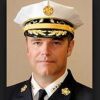It’s unfortunate and often unexpected, but we know that firefighters and EMS providers are all too often the targets of violence. Sometimes these attacks are deliberate and premeditated. Perhaps more often we find ourselves in the wrong place, at the wrong time, with people who, for a variety of reasons, assault those charged with helping them.
From the start of my fire-EMS career, I was taught to avoid confrontation and violent encounters. Interestingly enough, that’s the exact same training I received in several martial arts I’ve practiced through the years.
Like many of you, however, it didn’t take long before I found myself in harm’s way. Not very often, fortunately, but I had enough close calls that I became very proactive about staging and calling early for law enforcement support. Still, as in this story, sometimes we just can’t avoid a fracas.
While providing defensive tactics training for fire and emergency services workers makes a lot of sense, it’s also vital to constantly remember that the best way to avoid getting injured, or worse, is to avoid the fight. Physical measures are always a last resort; they can’t replace the skills of verbal de-escalation or, failing that, escape and evasion.
It’s also important to understand the legal implications of using physical force, even in a seemingly minor way, and regardless of whether or not you believe you’re acting in self-defense.
Stay safe!












